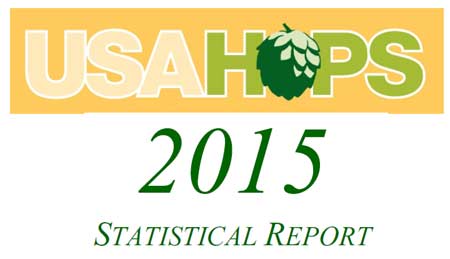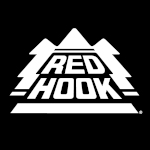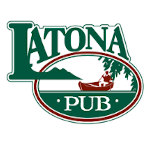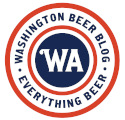While it is impossible to predict the weather, and therefore impossible to predict hop futures, the beer industry got some important information the other day when Hop Growers of America (HGA) released its 2015 Statistical Report.
I’ve got some good news and some bad news.
The good news is, expect higher yields in 2016 and more acreage dedicated to the aroma hops you love.
The bad news is, as expected, 2015’s exceptionally hot and dry weather negatively impacted the hop crop. Remain calm. The sky is not falling. This does not intrinsically mean the price of your favorite IPA is going up. In all honesty, that could happen at any time regardless of the health of the hop harvest.
The result of the low harvest was a deficit in worldwide production that hop suppliers will make up from inventories built in previous years. That’s not uncommon in the hop industry. There are good years and bad years. Last year was a bad year.
It should be noted that there was also a drought in Europe last year. Germany, the second-most productive hop region on earth, also suffered. They rely more heavily on rain for irrigation than farmers in the Northwest. That is, they are more reliant on rain for direct irrigation.
According to reports, the water stores for the Yakima Valley are currently at 117 percent of normal. For Washington overall, water stores are at 109 percent of normal. Hop Growers of America cautiously anticipates a good crop in 2016.
[singlepic id=815 w=475 h= float=none]
“The unusually high temperatures experienced this past summer were unprecedented, and we do not anticipate a repeat of an early and persistent heat wave,” said Ann George, Executive Director of Hop Growers of America (HGA). “While we are waiting to see the final snowpack situation in the spring, we know we are already far better off than last year, so we anticipate higher yields along with more acres going in to meet contract demands.”
Don’t Simply Blame it on the Rain
In a recent presentation at the Annual American Hop Convention, the Brewers Association (BA) noted that hopping rates and hop usage in the US continues to climb, and will continue to do so as consumers reach for hop-heavy IPA above all other beer styles.
According to the BA, last year the craft beer industry produced twice as much IPA as it did in 2011. The continually increasing demand for aroma varieties puts as much pressure on the hop industry as anything else.
[singlepic id=857 w=475 h= float=none]
Hop farmers continually adjust to meet the needs of the industry. In recent years, that means planting more of the aroma varieties used to give IPA its beloved aromatic, floral hop character. Although the harvest suffered in 2015, a larger percentage of the harvest included the varieties that hop heads crave. That trend will continue, in good years and bad.
Still, there’s no denying that last year’s weather impacted aroma varieties more than other varieties. According to the HGA Statistics Report, “High summer heats and water restrictions meant mixed results for crops, particular hitting earlier harvest varieties (aromas).”
Who Will Get the Hops?
If you’re worried about your local brewery’s ability to get the hops it needs to brew your favorite IPA, that’s a valid concern, but you should know that most breweries have multi-year contracts with hop suppliers, so essentially they are guaranteed to get the hops they need.
For those looking to make spot purchase, like nano-brewers and other smaller breweries without contracts, it may be a rough year.
[singlepic id=707 w=475 h= float=none]
Hop contracts are not an iron-clad elixir, and many brewers grumble about them, but breweries that do not have hop contracts will most likely find it more difficult to get the most popular hop varieties, especially in bad years.
According to Ann George, “Essentially, it was a rough year at home and across the globe, however, contracted needs will be met with occasional substitutions for something very similar because of the highly unusual growing season. We are already planning for and looking forward to 2016 harvest.”
Price of Your Pint
If you are worried about how all of this might impact the price of your pint, know that hop availability is just one of many factors involved in the equation. For breweries that have contracts, the price is set. At least in theory. You should probably be more concerned about lawmakers in Olympia passing new taxes or increasing existing taxes on beer, which is always a real concern. After all, this is a budget year in Washington.
More States Producing Hops, Kind of
Something interesting the HGA Statistics Report revealed, 21 additional states were added to the hop report in 2015. More and more states outside the Pacific Northwest are beginning to produce measurable quantities of hops. Still, production outside the Northwest was very small by comparison.
To put things in perspective, here are the top four hop-producing states, in terms of acreage:
- Washington – 32,158 (acres dedicated to hops)
- Oregon – 6,612
- Idaho – 4,863
- Michigan – 320
Although states like Michigan, New York, Montana, Nebraska and others are beginning to produce more hops, the Pacific Northwest continues to produce more than 90 percent of the nation’s hop crop, with about 75 percent coming from the Yakima Valley.
Here’s a link to the complete HGA Statistical Report (pdf).



































Hmmm. I wonder how this affects hops used in porters and stouts. Might we see more of these being made? IPAs with a lower IBU would not upset me.